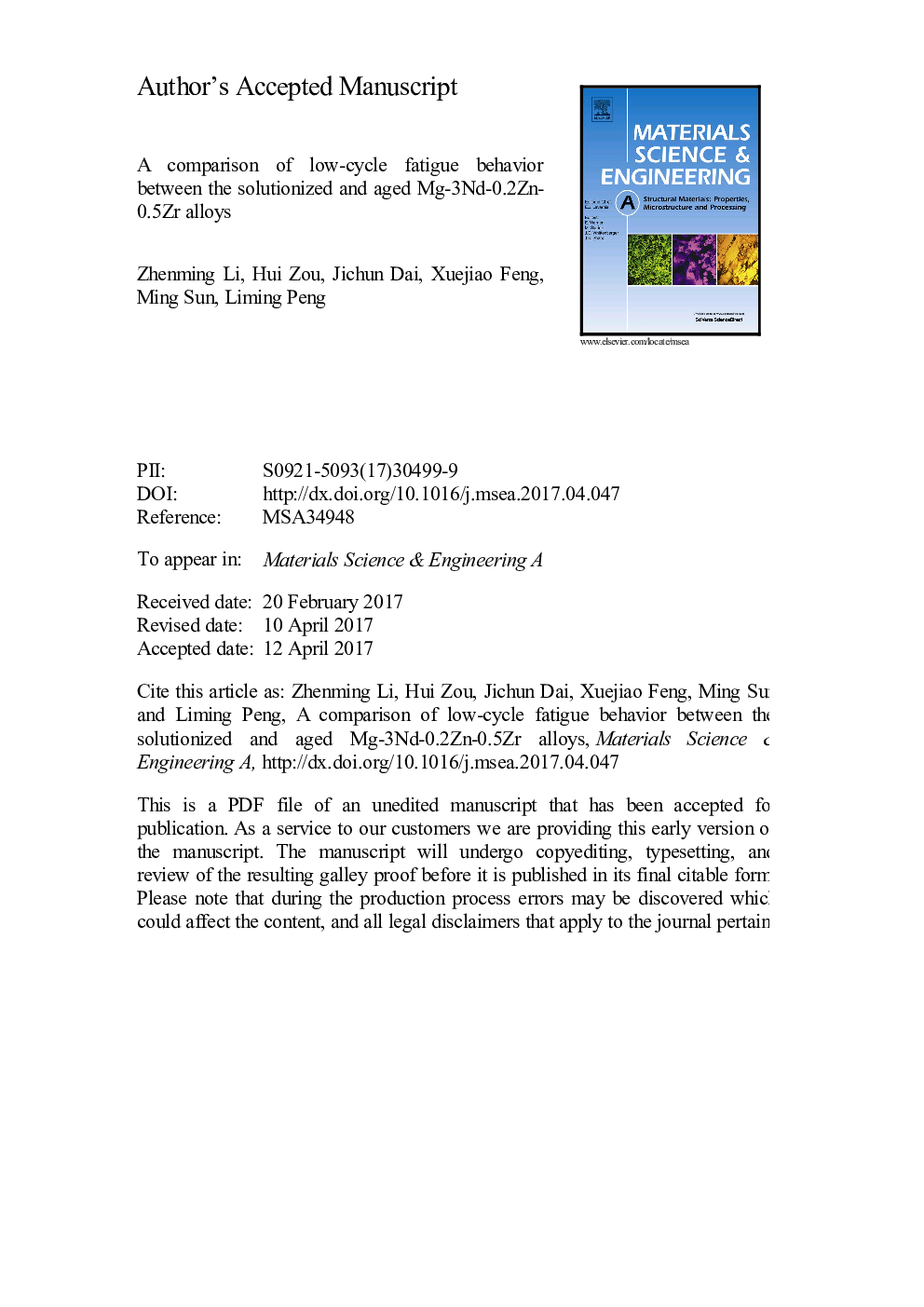| Article ID | Journal | Published Year | Pages | File Type |
|---|---|---|---|---|
| 5455731 | Materials Science and Engineering: A | 2017 | 19 Pages |
Abstract
The present paper compares the low cycle fatigue characteristics between the solution-treated (T4) and peak-aged (T6) Mg-3Nd-0.2Zn-0.5Zr magnesium alloys produced by semi-continuous casting. The cyclic stress amplitudes of the T6-treated counterpart are higher than those of the T4-treated alloy, which is due to precipitate strengthening. At the same stress amplitude, the T4-treated alloy with higher hysteresis energies undergoes more fatigue damage, resulting in shorter fatigue lives. For the T4-treated alloy, the cyclic stress amplitude is found to increase with increasing the cycle number, which is attributed to its soft matrix and the increased volume fraction and number density of twins under continuous loading. Cyclic hardening followed by the decrease of the stress is observed in the T6-treated alloy. It is shown that the cyclic deformation behavior and failure mechanism of the T4-treated alloy are dependent on the dislocations-slip plus twinning, while those of the T6-treated counterpart are dependent on the dislocations-slip. Based on discussion, the Coffin-Manson law and Basquin equation or the energy-based concepts can be well applied to the prediction of the LCF lives of the NZ30K alloys.
Related Topics
Physical Sciences and Engineering
Materials Science
Materials Science (General)
Authors
Zhenming Li, Hui Zou, Jichun Dai, Xuejiao Feng, Ming Sun, Liming Peng,
